Can a re-routed cross-border pylons plan appease locals?
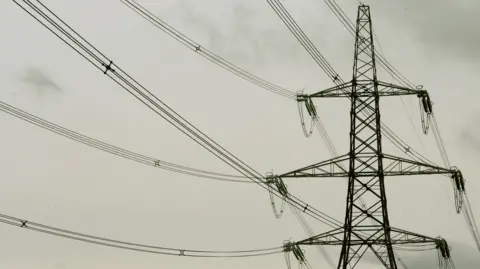 PA Media
PA MediaEnergy network bosses hope that a revised route for taking energy to England will appease at least some rural residents of the Scottish Borders.
Since plans for the Cross Border Connection were revealed last year protest groups have been formed in communities near the proposed pylons.
Following the backlash, Scottish Power Energy Networks (SPEN) have altered several sections of the 57-mile route between Lauder and the border, south of Newcastleton.
But Rosi Lister from Action Against Pylons - a collection of local community protest groups - warned: "It's all very well revising the route, but as soon as you move it from one place you affect another community."
SPEN project manager Ewan Borthwick said: "Historically we've had energy coming from the south - England and Wales - through nuclear and hydro, so it's now our turn to send renewable energy the other way."
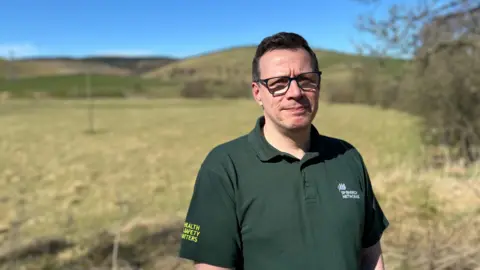
The Cross Border Connection is seen as a vital link in the UK upgrade of the national grid.
Dozens of wind farms and solar energy parks - from the Highlands all the way down to the Borders - are already connected to the grid, with many more projects in the pipeline.
Finding a suitable route for the 60-metre high pylons, between a proposed new electricity substation near Lauder and awaiting cables at the border near Carlisle, is proving problematic for SPEN.
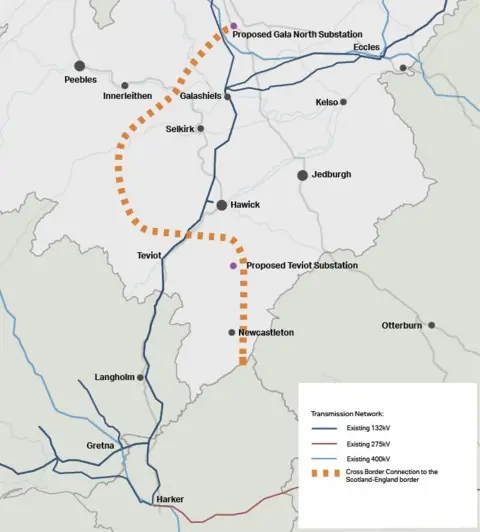 SPEN
SPENAnd bosses have ruled out an underground solution unless justification can be provided for localised sections.
Mr Borthwick added: "We know from previous projects that it is between six and nine times more expensive for an underground cable solution, rather than overhead.
"Going underground would take this project from the hundreds of millions [of pounds] into the billions, and we have a licence from Ofgem to come up with the most cost-efficient solution.
"It will be the electricity bill payers that will be paying for this over the next 50 years or so."
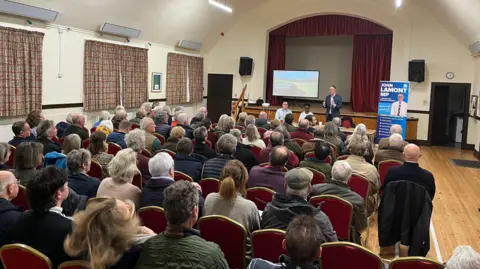
The revised route has taken the planned pylons further away from the villages of Roberton and Etrrickbridge - but moved them closer to settlements at Craik and Yarrow Feus.
There is also more use of areas already covered in forestry and the new route will have less impact on the World War II prisoner of war camp at Stobbs, outside Hawick.
SPEN's environmental planner Malrlene Marimbe said: "We reviewed all of the feedback from the public and statutory stakeholders during the consultation for the original route and modified the original preferred route.
"We believe this alternative route is more balanced when it comes to the concerns we received about visual impact and also the attractiveness of the landscape.
"We also took into account concerns about environmental impact as well as health impacts of proximity to residential properties."
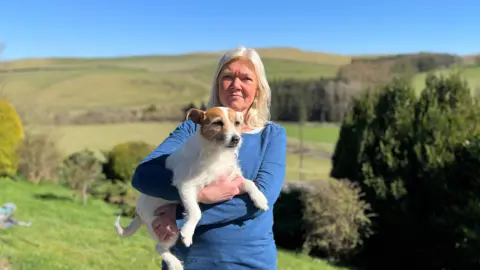
The latest consultation over the route will end on May 2, with the official proposed Cross Border Connection route being published later in the year.
Around half a dozen community protest groups along the route have come together to form Action Against Pylons.
Rosi Lister from the group said: "We believe this will destroy a large part of the Scottish Borders.
"It's all very well revising the route, but as soon as you move it from one place you affect another community.
"There are no winners with these pylons."
